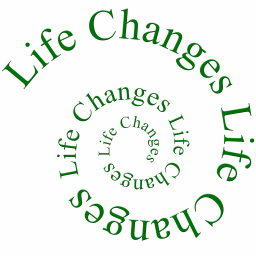The Light & The Dark
There's a foreboding and pervasive feeling of darkness in the land. Yes, there's a  normal increase in darkness during December when the sun is far south
in the northern hemisphere. But this ominous shroud of darkness goes
way beyond the seasonal change. Darkness permeates ordinary
conversations between friends causing short-tempered or angry
responses. The Light of Respect and Good Manners is depleted as
sinister or one-dimensional agendas reign over reasoned discourse that
would benefit the whole. In this darkness, one cannot rationally assess
any points of an argument due to the din of many voices speaking over
one another. Dark blame is everywhere and always levied on someone else
because "they" are wrong and "we" are right.
normal increase in darkness during December when the sun is far south
in the northern hemisphere. But this ominous shroud of darkness goes
way beyond the seasonal change. Darkness permeates ordinary
conversations between friends causing short-tempered or angry
responses. The Light of Respect and Good Manners is depleted as
sinister or one-dimensional agendas reign over reasoned discourse that
would benefit the whole. In this darkness, one cannot rationally assess
any points of an argument due to the din of many voices speaking over
one another. Dark blame is everywhere and always levied on someone else
because "they" are wrong and "we" are right.
But as long as we remain dependent on blaming someone else, or remain entangled in the murky tentacles of right or wrong, the fault is ours alone! Individuals, seasoned in the work of the Light, have a responsibility to join again in reasoned and wholesome conversation on the issues that divide us. Or the darkness will obliterate the goodness that we are for another season. It's difficult to imagine that we've progressed much beyond the words of Thomas Paine in 1776, "These are
the times that try men's souls." But he also said if 'sunshine
patriots' did not shrink from service they would be deserving of the
love and thanks of all men and women.
progressed much beyond the words of Thomas Paine in 1776, "These are
the times that try men's souls." But he also said if 'sunshine
patriots' did not shrink from service they would be deserving of the
love and thanks of all men and women.
Lightworkers are the sunshine patriots! That is the essence of what they are and can be during these dark times that try our souls. When it appears that the darkness has risen stronger than the light; when it appears that caring for the poor, the elderly, for children, and those in need is a sign of weakness; when it appears that rational thinkers and moderate people have gone mute, then must the 'sunshine patriots' rise up in service.
We have extraordinary ways to turn the Dark Into Light. Ignore the seductive dark clamor that envelops the airwaves of our daily lives. Hold tight to the values of compassion and caring for others. Embrace any ideals that empower you to live your life as a better person. Summon the support of those who share your views. And recognize that all people, all places, and all things on this earth have a life cycle of rising up and falling away. It is a law of nature that declares what is born today must die tomorrow.
December 21st is the longest day of darkness in the year. Yet, after a few short moments of stillness, the sun begins its migration back to the northern hemisphere and the dark days begin to recede. Within six months, (not even a
nanosecond in Cosmic time,) the opposite occurs. Just as it feels
darkness is forever, light returns. The pendulum of Light and Dark is
always in balance, rising and falling, though we get trapped in
believing otherwise.
and the dark days begin to recede. Within six months, (not even a
nanosecond in Cosmic time,) the opposite occurs. Just as it feels
darkness is forever, light returns. The pendulum of Light and Dark is
always in balance, rising and falling, though we get trapped in
believing otherwise.
It's so much easier to live in the balance point of that rising and falling wisdom described by the Buddha. The 'sunshine patriots' can always endure from a place of Light and Wholesomeness! That place holds a much gentler feeling to it and creates less disharmony and stress on the being. Without any attachments to the illusions, this work can be done! For at the end of each season, the Dark must become Light and the Light must become Dark. Each one rising and falling according to the time allotted. It is the law and it is in balance. For in the end, this too shall pass away giving rise to something newer!
 normal increase in darkness during December when the sun is far south
in the northern hemisphere. But this ominous shroud of darkness goes
way beyond the seasonal change. Darkness permeates ordinary
conversations between friends causing short-tempered or angry
responses. The Light of Respect and Good Manners is depleted as
sinister or one-dimensional agendas reign over reasoned discourse that
would benefit the whole. In this darkness, one cannot rationally assess
any points of an argument due to the din of many voices speaking over
one another. Dark blame is everywhere and always levied on someone else
because "they" are wrong and "we" are right.
normal increase in darkness during December when the sun is far south
in the northern hemisphere. But this ominous shroud of darkness goes
way beyond the seasonal change. Darkness permeates ordinary
conversations between friends causing short-tempered or angry
responses. The Light of Respect and Good Manners is depleted as
sinister or one-dimensional agendas reign over reasoned discourse that
would benefit the whole. In this darkness, one cannot rationally assess
any points of an argument due to the din of many voices speaking over
one another. Dark blame is everywhere and always levied on someone else
because "they" are wrong and "we" are right. But as long as we remain dependent on blaming someone else, or remain entangled in the murky tentacles of right or wrong, the fault is ours alone! Individuals, seasoned in the work of the Light, have a responsibility to join again in reasoned and wholesome conversation on the issues that divide us. Or the darkness will obliterate the goodness that we are for another season. It's difficult to imagine that we've
 progressed much beyond the words of Thomas Paine in 1776, "These are
the times that try men's souls." But he also said if 'sunshine
patriots' did not shrink from service they would be deserving of the
love and thanks of all men and women.
progressed much beyond the words of Thomas Paine in 1776, "These are
the times that try men's souls." But he also said if 'sunshine
patriots' did not shrink from service they would be deserving of the
love and thanks of all men and women. Lightworkers are the sunshine patriots! That is the essence of what they are and can be during these dark times that try our souls. When it appears that the darkness has risen stronger than the light; when it appears that caring for the poor, the elderly, for children, and those in need is a sign of weakness; when it appears that rational thinkers and moderate people have gone mute, then must the 'sunshine patriots' rise up in service.
We have extraordinary ways to turn the Dark Into Light. Ignore the seductive dark clamor that envelops the airwaves of our daily lives. Hold tight to the values of compassion and caring for others. Embrace any ideals that empower you to live your life as a better person. Summon the support of those who share your views. And recognize that all people, all places, and all things on this earth have a life cycle of rising up and falling away. It is a law of nature that declares what is born today must die tomorrow.
December 21st is the longest day of darkness in the year. Yet, after a few short moments of stillness, the sun begins its migration back to the northern hemisphere
 and the dark days begin to recede. Within six months, (not even a
nanosecond in Cosmic time,) the opposite occurs. Just as it feels
darkness is forever, light returns. The pendulum of Light and Dark is
always in balance, rising and falling, though we get trapped in
believing otherwise.
and the dark days begin to recede. Within six months, (not even a
nanosecond in Cosmic time,) the opposite occurs. Just as it feels
darkness is forever, light returns. The pendulum of Light and Dark is
always in balance, rising and falling, though we get trapped in
believing otherwise.It's so much easier to live in the balance point of that rising and falling wisdom described by the Buddha. The 'sunshine patriots' can always endure from a place of Light and Wholesomeness! That place holds a much gentler feeling to it and creates less disharmony and stress on the being. Without any attachments to the illusions, this work can be done! For at the end of each season, the Dark must become Light and the Light must become Dark. Each one rising and falling according to the time allotted. It is the law and it is in balance. For in the end, this too shall pass away giving rise to something newer!
Jo Mooy - December 2013

 misplaced in a California State Park filled with families laughing and
happily enjoying summer vacations. We looked around for the source of
the sound. Then we saw him.
misplaced in a California State Park filled with families laughing and
happily enjoying summer vacations. We looked around for the source of
the sound. Then we saw him.
 enjoy the music of life.
enjoy the music of life.  One particular autumn shaped my life forever more. Our mom cooked good
food that was as delicious as it was nutritious. In fall she prepared
for the holidays by baking cookies - lots of them in a great variety of
shapes, flavors and textures. Cookies are a treat that nourish us on so
many levels. They bring joy to the taste buds, a lightness to the mind
and a healing of the soul.
One particular autumn shaped my life forever more. Our mom cooked good
food that was as delicious as it was nutritious. In fall she prepared
for the holidays by baking cookies - lots of them in a great variety of
shapes, flavors and textures. Cookies are a treat that nourish us on so
many levels. They bring joy to the taste buds, a lightness to the mind
and a healing of the soul.  movement well. When we got home my dad would lay 2x4s on the ground
and nail them together to make a pen to hold the walnuts while the outer
shells dried out in the sun for weeks. When they were ready to be
hulled he took his large carpenter's hammer smashing the thick outer
shell tossing them onto tin baking pans. Then each evening we'd all dig
out the precious tasting walnut meat for the inevitable holiday baking
to come. All of this lay in the depths of my psyche as we hunted for
the round treasures hidden under the fallen leaves of the great old
trees.
movement well. When we got home my dad would lay 2x4s on the ground
and nail them together to make a pen to hold the walnuts while the outer
shells dried out in the sun for weeks. When they were ready to be
hulled he took his large carpenter's hammer smashing the thick outer
shell tossing them onto tin baking pans. Then each evening we'd all dig
out the precious tasting walnut meat for the inevitable holiday baking
to come. All of this lay in the depths of my psyche as we hunted for
the round treasures hidden under the fallen leaves of the great old
trees. I think there were more walnuts to be had but something had changed and
we headed home. The bags of walnuts were piled in the backyard
forgotten now as we gathered round as mom and dad opened the purse
tentatively. My parents were honest hard-working folks so we could see
they felt like sneaks just opening the bag to see if there was some id
in it. Even before they'd opened it there was talk of placing ads in
the personals to see if the owner could be found. Each article was
removed and placed carefully on the kitchen table, some tissue, a
wallet, a comb, a huge diamond ring. Even to a kid's eye, you could
tell this was very valuable, And then the one thing they had hoped to
find, an address book which identified the owner.
I think there were more walnuts to be had but something had changed and
we headed home. The bags of walnuts were piled in the backyard
forgotten now as we gathered round as mom and dad opened the purse
tentatively. My parents were honest hard-working folks so we could see
they felt like sneaks just opening the bag to see if there was some id
in it. Even before they'd opened it there was talk of placing ads in
the personals to see if the owner could be found. Each article was
removed and placed carefully on the kitchen table, some tissue, a
wallet, a comb, a huge diamond ring. Even to a kid's eye, you could
tell this was very valuable, And then the one thing they had hoped to
find, an address book which identified the owner.  second thought. I could tell by the smiles on my parent's faces that
their reward was the warmth that comes with bringing great joy to
someone and in this case someone they would never meet. Then the
incident was forgotten and we went back to our rhythm, the walnuts were
laid in the sunshine to dry, children went to school, fathers to work
and mom kept the home fires burning.
second thought. I could tell by the smiles on my parent's faces that
their reward was the warmth that comes with bringing great joy to
someone and in this case someone they would never meet. Then the
incident was forgotten and we went back to our rhythm, the walnuts were
laid in the sunshine to dry, children went to school, fathers to work
and mom kept the home fires burning.  dad was adamant. "You are going to get something for yourself;
something that will make you happy." A few weeks later, a used upright
piano arrived. My mother who had learned to play as a child sat down
and was in her element.
dad was adamant. "You are going to get something for yourself;
something that will make you happy." A few weeks later, a used upright
piano arrived. My mother who had learned to play as a child sat down
and was in her element.  born. Breaking speed limits across three states, the two-hour drive
took me to the hospital where I saw him in person for the first time.
When his mother was a few months pregnant with him, I'd seen him as a
spark of light on my bedroom wall quite a few times. I would hear a
delightful humming sound in the wee hours of the night, open my eyes,
and see this spark of light dancing on the walls. I knew who he was
even before she knew it was a him. At the hospital, he was wrapped up
in a blue and white flannel blanket. I checked his tiny hands, no
bigger than my thumb, and wondered what this 'crystal boy,' born in the
last year of the 20th century, would create with those hands. What type
of person would he become?
born. Breaking speed limits across three states, the two-hour drive
took me to the hospital where I saw him in person for the first time.
When his mother was a few months pregnant with him, I'd seen him as a
spark of light on my bedroom wall quite a few times. I would hear a
delightful humming sound in the wee hours of the night, open my eyes,
and see this spark of light dancing on the walls. I knew who he was
even before she knew it was a him. At the hospital, he was wrapped up
in a blue and white flannel blanket. I checked his tiny hands, no
bigger than my thumb, and wondered what this 'crystal boy,' born in the
last year of the 20th century, would create with those hands. What type
of person would he become? way he said it I was sure he'd visited that place not that long ago.
It was the start of our many unconventional conversations
together.
way he said it I was sure he'd visited that place not that long ago.
It was the start of our many unconventional conversations
together. something to say, one listens. He creates magical virtual cities on
his laptop, demonstrating concern that water and the air remain pure
while describing how neighbors and countries can work easily with one
another.
something to say, one listens. He creates magical virtual cities on
his laptop, demonstrating concern that water and the air remain pure
while describing how neighbors and countries can work easily with one
another.  seeds of tolerance in all of humanity. It's what they came to do.
seeds of tolerance in all of humanity. It's what they came to do.
 in other than the approved area! Meditation was only allowed in your room or the meditation hall!
in other than the approved area! Meditation was only allowed in your room or the meditation hall!  reality occurs. The breath becomes a living entity. It can be hot or cold, moist or dry, rapid or slow. It can go in one nostril or both. And during each sit, the experience is different because each breath is different.
reality occurs. The breath becomes a living entity. It can be hot or cold, moist or dry, rapid or slow. It can go in one nostril or both. And during each sit, the experience is different because each breath is different. me or I it. I simply watched it, following my breath, aware of the sensations of fear give way to acceptance coursing through my body. Then the scorpion moved on. I also wanted to experience the magic that they promised would occur on Day 10.
me or I it. I simply watched it, following my breath, aware of the sensations of fear give way to acceptance coursing through my body. Then the scorpion moved on. I also wanted to experience the magic that they promised would occur on Day 10. spasms, muscular aches and pains, chills, and total exhaustion. Walking fifty feet to the mailbox was like running a marathon requiring hours of rest. The doctor confirmed my immune system was compromised from a similar virus I'd contracted in India. He prescribed rest while monitoring it for pneumonia or bronchitis.
spasms, muscular aches and pains, chills, and total exhaustion. Walking fifty feet to the mailbox was like running a marathon requiring hours of rest. The doctor confirmed my immune system was compromised from a similar virus I'd contracted in India. He prescribed rest while monitoring it for pneumonia or bronchitis. required to do anything was non-existent. I couldn't do my daily meditation practices because I couldn't breathe and the coughing was constant. In fact, all I could do was sleep, stare out the window, sleep, watch TV, and sleep some more. It turned out to be a preordained retreat in its own way.
required to do anything was non-existent. I couldn't do my daily meditation practices because I couldn't breathe and the coughing was constant. In fact, all I could do was sleep, stare out the window, sleep, watch TV, and sleep some more. It turned out to be a preordained retreat in its own way. kitchens and bathrooms. With my previous life immersed in daily spiritual pursuits, mindlessly watching TV was a radical behavioral change. But something else was occurring.
kitchens and bathrooms. With my previous life immersed in daily spiritual pursuits, mindlessly watching TV was a radical behavioral change. But something else was occurring. I looked up molting in the dictionary. It means to cast off or shed skin, feathers and the like that will be replaced with new growth. The Zen virus had become my guide. It taught me to take time for trivial pursuits. It gave me permission to do nothing if I wanted to. It showed me how to be quietly observant. It held no judgments. It allowed me to be present moment by moment. And it reminded me that it would lurk in the cells of my body in case I forgot the lessons.
I looked up molting in the dictionary. It means to cast off or shed skin, feathers and the like that will be replaced with new growth. The Zen virus had become my guide. It taught me to take time for trivial pursuits. It gave me permission to do nothing if I wanted to. It showed me how to be quietly observant. It held no judgments. It allowed me to be present moment by moment. And it reminded me that it would lurk in the cells of my body in case I forgot the lessons.  world seemed to be filled with hope and expectation, felt like a dim
memory. Instead, a daily dose of negative news and unpleasant events
spoiled the atmosphere. As if that weren't enough, I watched a couple
incidents unfold recently that made me question the behavior of some
individuals for whom I had great respect. That was a particularly
difficult experience.
world seemed to be filled with hope and expectation, felt like a dim
memory. Instead, a daily dose of negative news and unpleasant events
spoiled the atmosphere. As if that weren't enough, I watched a couple
incidents unfold recently that made me question the behavior of some
individuals for whom I had great respect. That was a particularly
difficult experience. thousands were killed or maimed. Others say the worst of times was the Holocaust or during other ethnic cleansing. Was the worst of times
when the bubonic plague killed 50% of Europe's population or when the
flu pandemic of 1918 killed 5% of the world's population? The worst of times is what each individual is living through and experiencing in a negative way at any given moment.
thousands were killed or maimed. Others say the worst of times was the Holocaust or during other ethnic cleansing. Was the worst of times
when the bubonic plague killed 50% of Europe's population or when the
flu pandemic of 1918 killed 5% of the world's population? The worst of times is what each individual is living through and experiencing in a negative way at any given moment. and information at the finger-tips. But the fast-paced usage of smart
devices has caused a huge gap in our ability to be aware of others. As
individuals become addicted to devices which foster self-absorbing
behavior, good manners and etiquette have gone by the wayside.
and information at the finger-tips. But the fast-paced usage of smart
devices has caused a huge gap in our ability to be aware of others. As
individuals become addicted to devices which foster self-absorbing
behavior, good manners and etiquette have gone by the wayside. But sadly, the deterioration of manners goes beyond the usage of
electronic devices. It extends to those who should "know better" and
who disappoint us by disregarding common courtesy. For example, how
often is a meaningful 'thank-you' or a few well-chosen words of
appreciation extended to the volunteers who serve?
But sadly, the deterioration of manners goes beyond the usage of
electronic devices. It extends to those who should "know better" and
who disappoint us by disregarding common courtesy. For example, how
often is a meaningful 'thank-you' or a few well-chosen words of
appreciation extended to the volunteers who serve?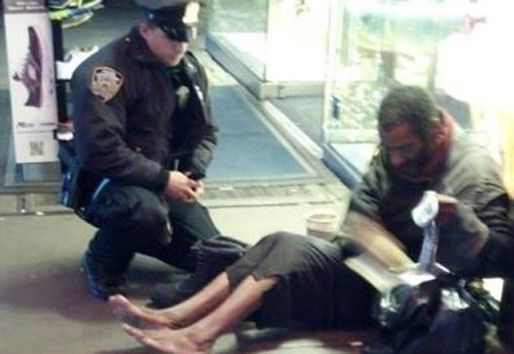 lifts personal behavior to a higher plane of understanding and expands
universal connection. It creates genuine human connections, the
recognition of which touches and changes the character of the person.
The individuals who behave in this manner generally follow an
enlightened lifestyle. Kindness is a hallmark of their lives. They
take the high road in disputes, and are more likely to treat others as
they would like to be treated.
lifts personal behavior to a higher plane of understanding and expands
universal connection. It creates genuine human connections, the
recognition of which touches and changes the character of the person.
The individuals who behave in this manner generally follow an
enlightened lifestyle. Kindness is a hallmark of their lives. They
take the high road in disputes, and are more likely to treat others as
they would like to be treated.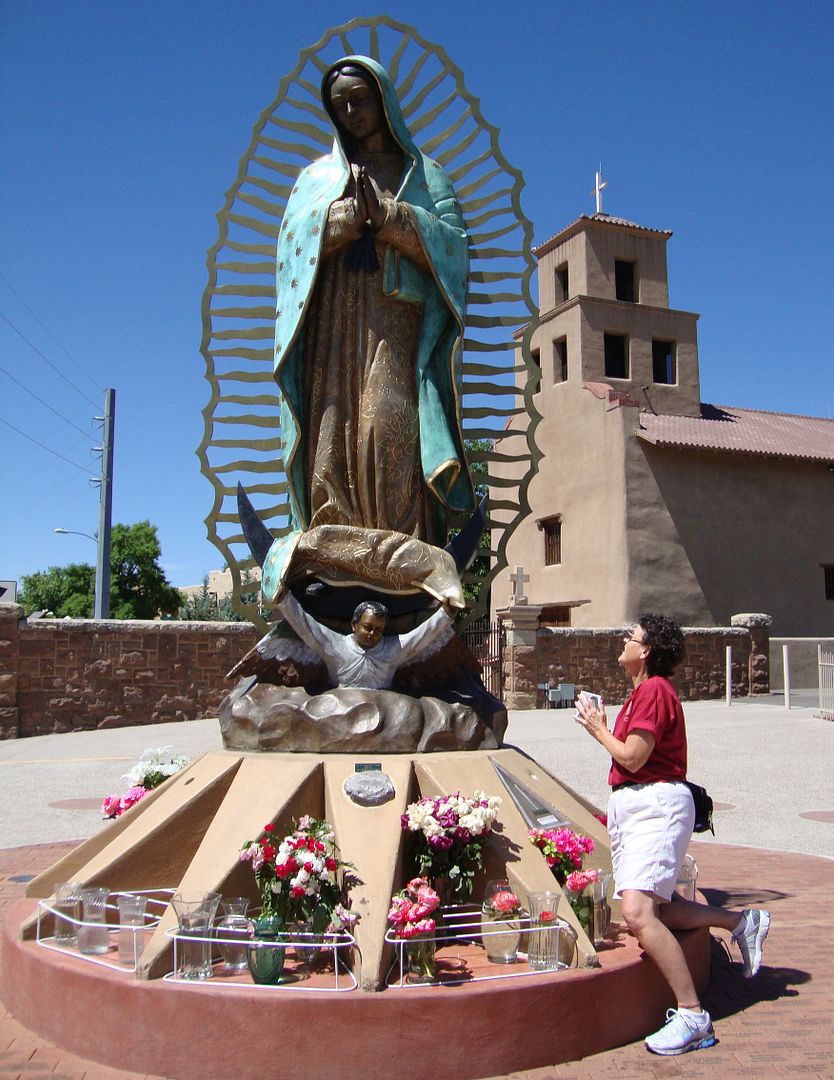 But remembering to do the practice is the hardest part. Human
selfishness causes us to be distracted or to become preoccupied with
unimportant interruptions. It will derail the best intentions and cause
an easy return to the state of carelessness. Human Self-Mastery on
the other hand suggests that Mindfulness can be developed as a permanent
state. The more consciously mindful one is of other people, the more
that awareness is woven into the habitual fabric of an individual.
But remembering to do the practice is the hardest part. Human
selfishness causes us to be distracted or to become preoccupied with
unimportant interruptions. It will derail the best intentions and cause
an easy return to the state of carelessness. Human Self-Mastery on
the other hand suggests that Mindfulness can be developed as a permanent
state. The more consciously mindful one is of other people, the more
that awareness is woven into the habitual fabric of an individual. as a baby, go through life, get old and then die. Then after death
we're told our soul goes somewhere. The "somewhere" depends on the
religion or belief system we were born into. After a period of time, we
come back or reincarnate into another body and do the same thing all
over again.
as a baby, go through life, get old and then die. Then after death
we're told our soul goes somewhere. The "somewhere" depends on the
religion or belief system we were born into. After a period of time, we
come back or reincarnate into another body and do the same thing all
over again.  the leading scholars on NDEs. In one of his documented cases a girl
who nearly drowned at the age of 7 reported seeing two adults "waiting to be born." In another case, an individual stated she got information from a group milling around as "they were all waiting for reincarnation." Again the questions came - who or what was waiting to be born.
the leading scholars on NDEs. In one of his documented cases a girl
who nearly drowned at the age of 7 reported seeing two adults "waiting to be born." In another case, an individual stated she got information from a group milling around as "they were all waiting for reincarnation." Again the questions came - who or what was waiting to be born.
 most remarkable occurrence was two days after the death of my
neighbor. The lights in my house began to flicker on and off. When I
ventured into the living room I saw two very large Orbs near the
ceiling. Realizing Kathy had just passed I asked, "Is that you, Kathy?"
At that moment, one of the Orbs powered up brightly and stayed that way
for about ten seconds. Knowing Kathy wanted to be with her mother who
had previously passed over, I asked "Is that your mother with you?"
And the second Orb powered up. Eventually, they both faded from view,
but not before being documented by two people in the house.
most remarkable occurrence was two days after the death of my
neighbor. The lights in my house began to flicker on and off. When I
ventured into the living room I saw two very large Orbs near the
ceiling. Realizing Kathy had just passed I asked, "Is that you, Kathy?"
At that moment, one of the Orbs powered up brightly and stayed that way
for about ten seconds. Knowing Kathy wanted to be with her mother who
had previously passed over, I asked "Is that your mother with you?"
And the second Orb powered up. Eventually, they both faded from view,
but not before being documented by two people in the house.
 you've been given a limited amount of it. She said each of us had been
given a secret number when we departed the spirit world. It was the
number of years we have on earth and it related to our destiny and our
mission. She said use the time wisely and with purpose. So I asked her "How do we measure our time left and how do we accomplish our mission?"
you've been given a limited amount of it. She said each of us had been
given a secret number when we departed the spirit world. It was the
number of years we have on earth and it related to our destiny and our
mission. She said use the time wisely and with purpose. So I asked her "How do we measure our time left and how do we accomplish our mission?"  year left in her life. When she was younger, the jar was practically
full but in the latter part of her seventh decade, there were only 15
marbles in the jar. Rolling them into her hands the visual made a
lasting impression. She explained that when she was a young girl in
South America her grandmother taught her the magic and medicine of the
earth and how to relate to all species. Her grandmother also taught her
about the finite number of years given to each person on earth.
year left in her life. When she was younger, the jar was practically
full but in the latter part of her seventh decade, there were only 15
marbles in the jar. Rolling them into her hands the visual made a
lasting impression. She explained that when she was a young girl in
South America her grandmother taught her the magic and medicine of the
earth and how to relate to all species. Her grandmother also taught her
about the finite number of years given to each person on earth.  deeply reflect on the year just past. What had she done with the year?
How did she spend her time? Was it a year making the world a better
place? Or was it squandered? She said at first the bag appeared filled
with endless stones. But over time, as the stones began to diminish she
realized the value of time and how it was being spent.
deeply reflect on the year just past. What had she done with the year?
How did she spend her time? Was it a year making the world a better
place? Or was it squandered? She said at first the bag appeared filled
with endless stones. But over time, as the stones began to diminish she
realized the value of time and how it was being spent.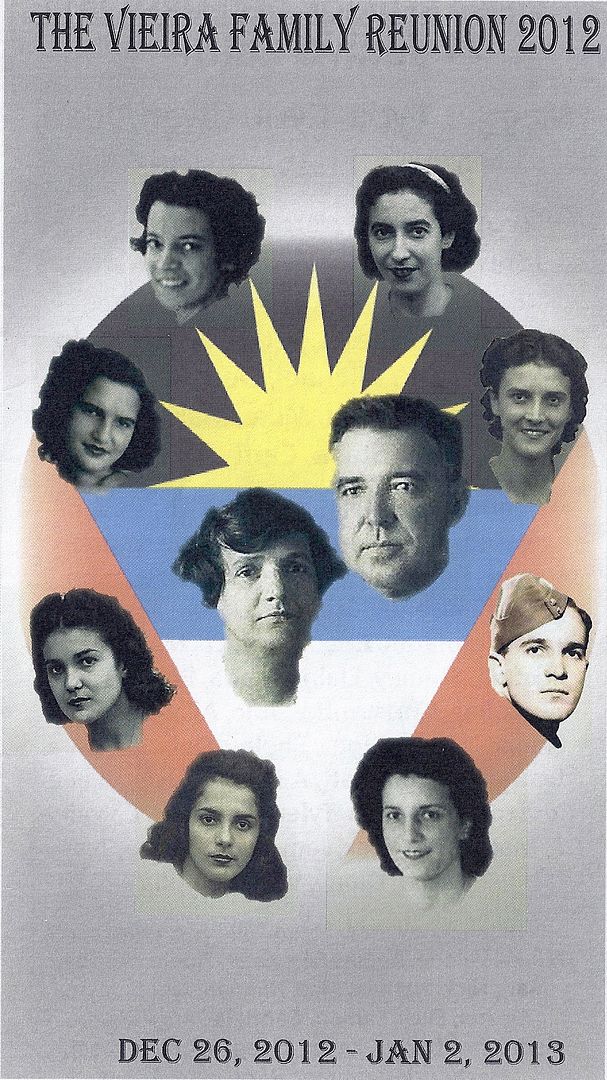
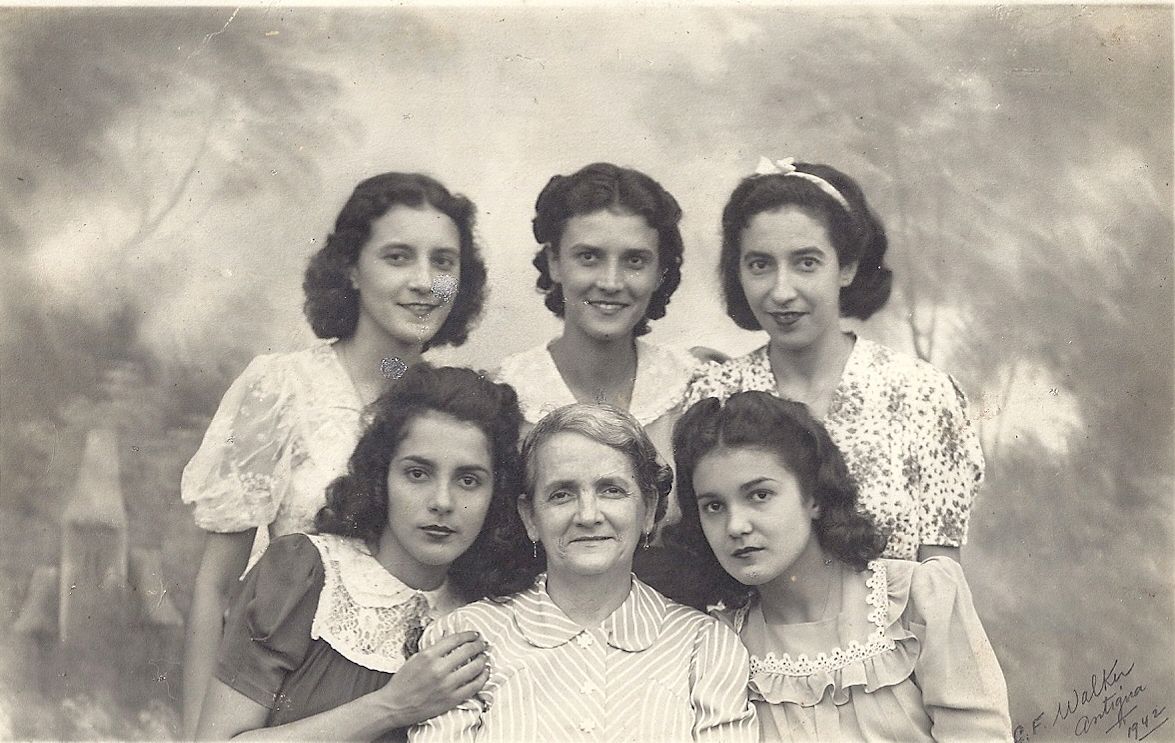 The endless continuity of life became clear as a lineage expanding across four generations unfolded
The endless continuity of life became clear as a lineage expanding across four generations unfolded life here on earth. We believe its separate because it cannot be
seen. It cannot be seen because the vibrations of those on earth are
denser by nature than the vibrations of the spirit realms. The fact is,
the soul does not "go anywhere after death" but rather occupies all
space. It retains memories, knowledge, impressions, thoughts and
vibrations from its life on earth and holds that together in ethereal
energy packets. Those packets are picked up and used by both the
incoming incarnating souls and the outgoing souls leaving incarnation.
life here on earth. We believe its separate because it cannot be
seen. It cannot be seen because the vibrations of those on earth are
denser by nature than the vibrations of the spirit realms. The fact is,
the soul does not "go anywhere after death" but rather occupies all
space. It retains memories, knowledge, impressions, thoughts and
vibrations from its life on earth and holds that together in ethereal
energy packets. Those packets are picked up and used by both the
incoming incarnating souls and the outgoing souls leaving incarnation. 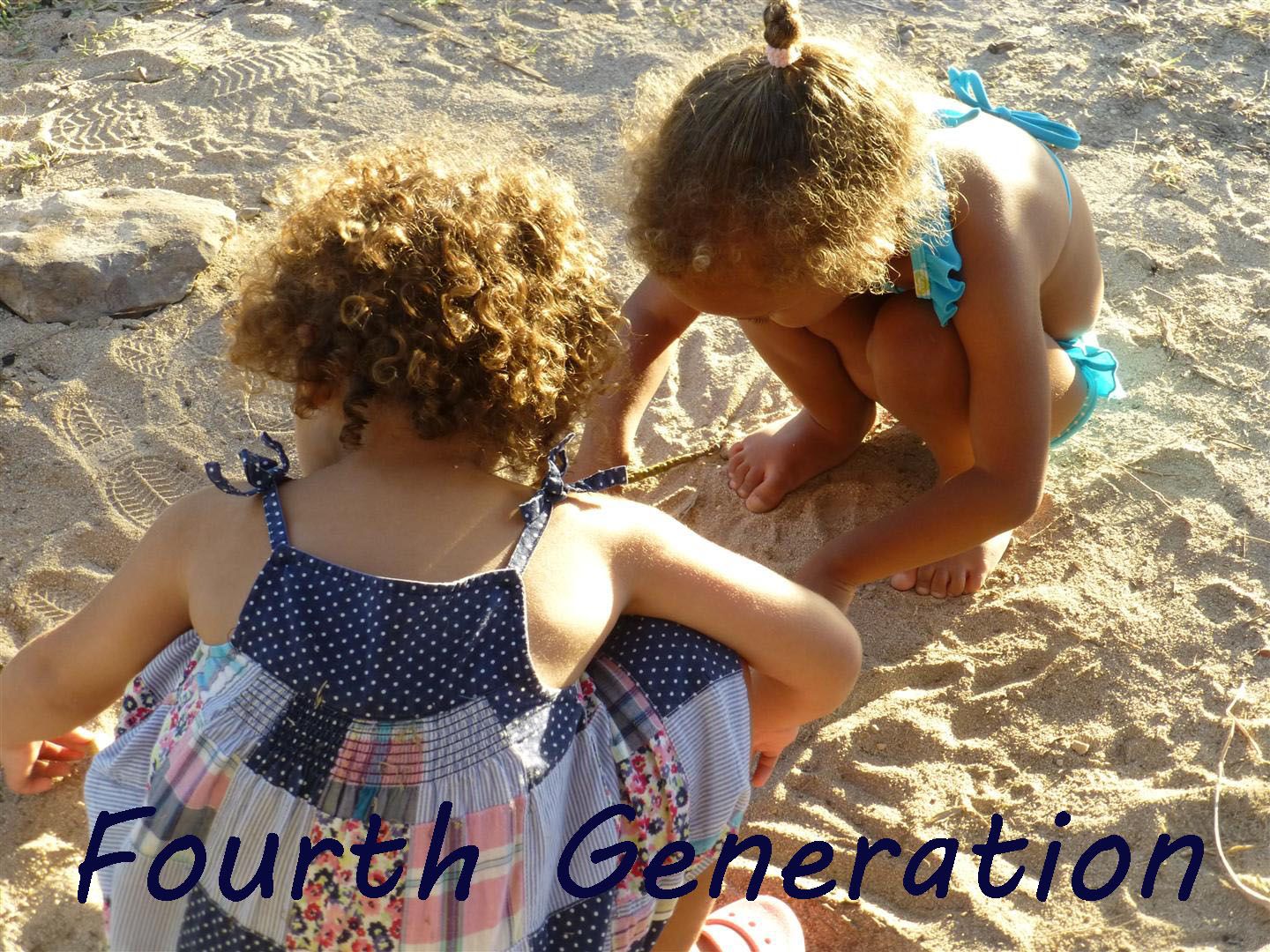 deposited for the new comers (or returning souls for the
reincarnationists) which then further alters the family destiny and
forms new purposes.
deposited for the new comers (or returning souls for the
reincarnationists) which then further alters the family destiny and
forms new purposes.  Antigua always called it "home." She learned to body-surf as a child
at the sometimes treacherous Half Moon Bay, her favorite place on the
island. It was also the place the family always met on Sundays. During
the reunion it was one of the spots selected for a day-long picnic
and swim. I watched my seventy-six year old aunt, the youngest of the
eight girls, go out to the towering waves and body surf with her nephews
"one last time." Though tossed around by the pounding surf, she gamely
took the swells for about twenty minutes. She said it was like surfing
with her sisters in the 1940's and 50's.
Antigua always called it "home." She learned to body-surf as a child
at the sometimes treacherous Half Moon Bay, her favorite place on the
island. It was also the place the family always met on Sundays. During
the reunion it was one of the spots selected for a day-long picnic
and swim. I watched my seventy-six year old aunt, the youngest of the
eight girls, go out to the towering waves and body surf with her nephews
"one last time." Though tossed around by the pounding surf, she gamely
took the swells for about twenty minutes. She said it was like surfing
with her sisters in the 1940's and 50's.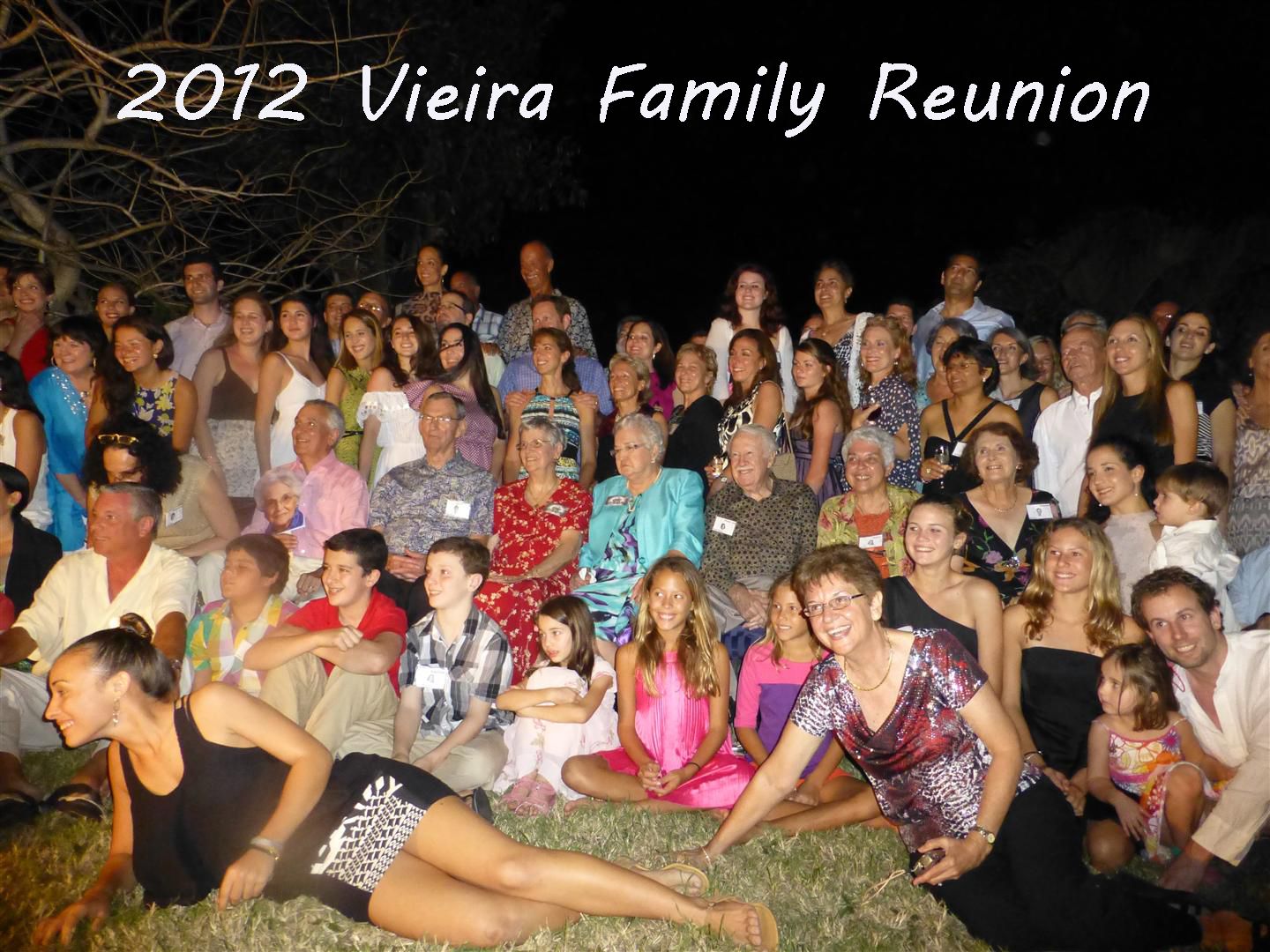 about their deceased parent and suddenly note that the clock face said 3:33 or 12:12.
about their deceased parent and suddenly note that the clock face said 3:33 or 12:12. December of 2012. It didn't happen. I never thought anything
catastrophic would occur. Geological changes move at a glacial pace
and the end of the Mayan calendar wasn't going to alter that fact.
Changes in human consciousness though can come about more frequently.
So hedging my bets, I prepared for whatever was going to happen.
December of 2012. It didn't happen. I never thought anything
catastrophic would occur. Geological changes move at a glacial pace
and the end of the Mayan calendar wasn't going to alter that fact.
Changes in human consciousness though can come about more frequently.
So hedging my bets, I prepared for whatever was going to happen.  depth of this ancient culture. Inbred into the fabric of their daily
lives, it flourished in their beliefs and behavior. Yet, I was stunned
at the country's gross ambivalence towards poverty, clean water, and the
lack of sanitation.
depth of this ancient culture. Inbred into the fabric of their daily
lives, it flourished in their beliefs and behavior. Yet, I was stunned
at the country's gross ambivalence towards poverty, clean water, and the
lack of sanitation. 